Disclaimer
The Dover Public Library website offers public access to a wide range of information, including historical materials that are products of their particular times, and may contain values, language or stereotypes that would now be deemed insensitive, inappropriate or factually inaccurate. However, these records reflect the shared attitudes and values of the community from which they were collected and thus constitute an important social record.
The materials contained in the collection do not represent the opinions of the City of Dover, or the Dover Public Library.
B & M Railroad Station
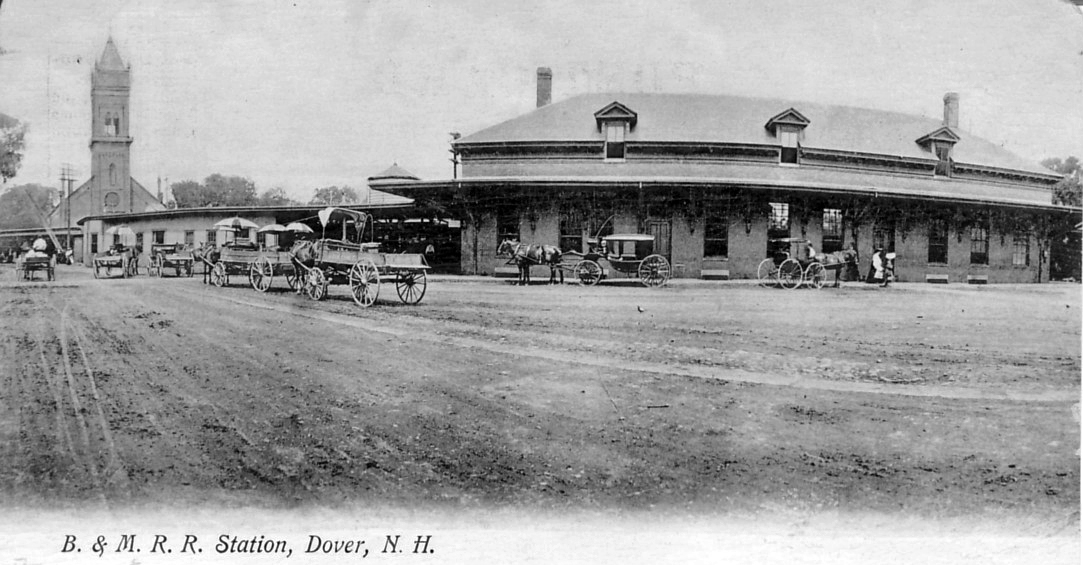
The station was located on Third Street.
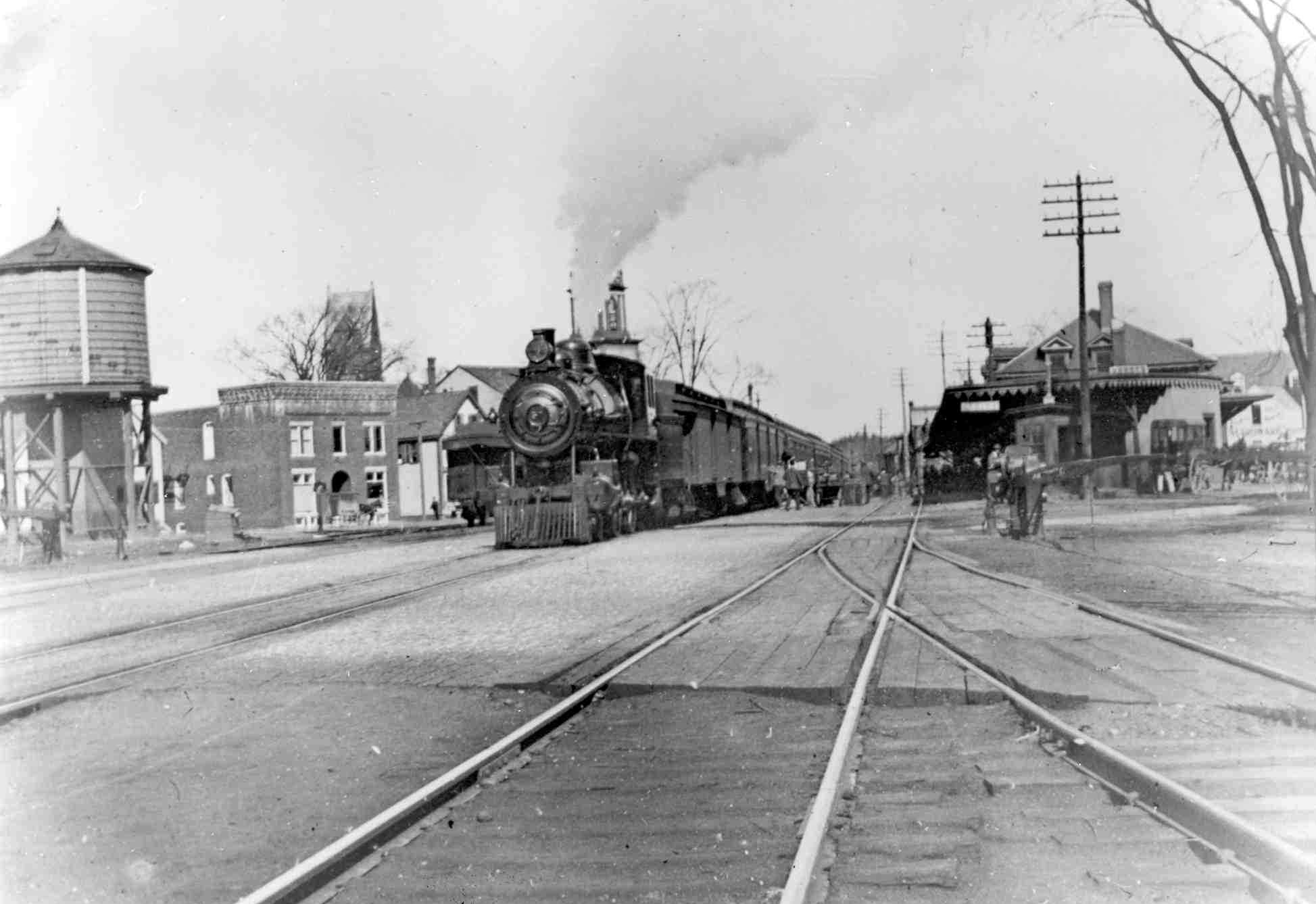
Circa 1898
In 1838, after New Hampshire granted the Boston and Maine Railroad permission to cross into the state from Haverhill, Dover voters assented to the tracks passing through their town. The Dover Gazette lobbied against it, stating that the railroad would put men out of work who road the stages and coasting vessels. Dover would "be turned into a town of idlers, under a tyrant's power." When the first B&M locomotive steamed into "Coffin's Cut" on September 1, 1841, great crowds assembled on Arch Street. Most had never seen a train before and one man was heard to remark, "You can't fool me! I know there's a horse in there somewhere."
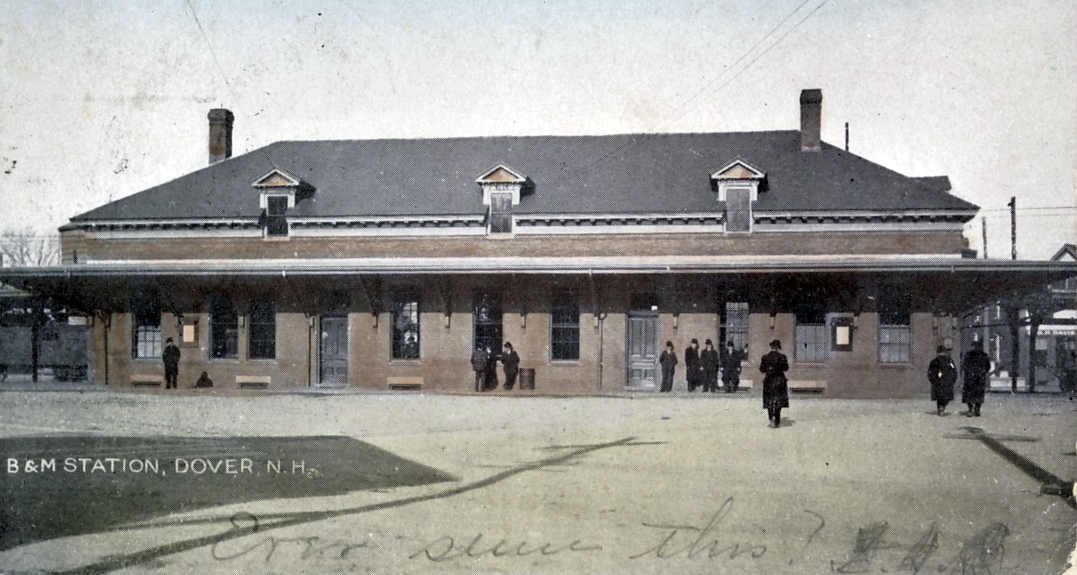
In 1842, a year after the tracks from Boston reached Dover and the Boston and Maine Railroad began carrying passengers to the city, the Third Street Station was built. Soon the railroad added a roundhouse and engine facilities near the Cocheco River. In the days of steam, Dover being midway from Boston to Portland, many trains stopped here to take on water at the Chestnut Street tower. In 1851, the Cocheco Railroad to Alton was completed. In 1874, the Portsmouth and Dover Railroad was formally opened for travel. There were nine railroad staions serving the community:Dover, Cocheco, Folsom Street, Sawyers, Cemetery, Cushing's, Bellamy, Hilton, and Dover Point.
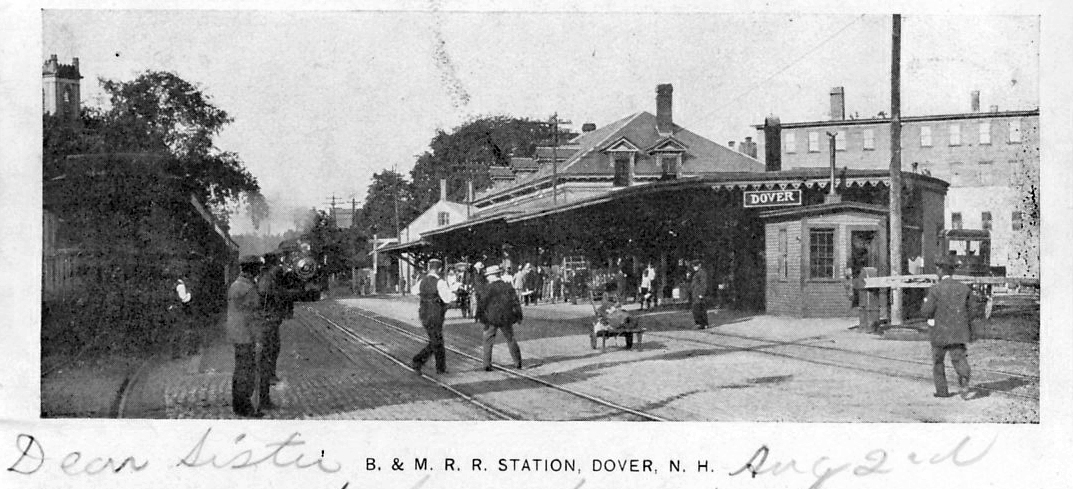
It was not uncommon for fifty or more trains a day to originate in or pass through Dover, with trains to and from Boston, Portland, Portsmouth, Conway and others, In the winter, ski trains often put on a second locomotive for the run up the Conway branch. In 1919, a new roundhouse was built further east near Oak Street. In 1928, Dover became the headquarters for the Portland division of the B&M and the two-story station was modified to three.
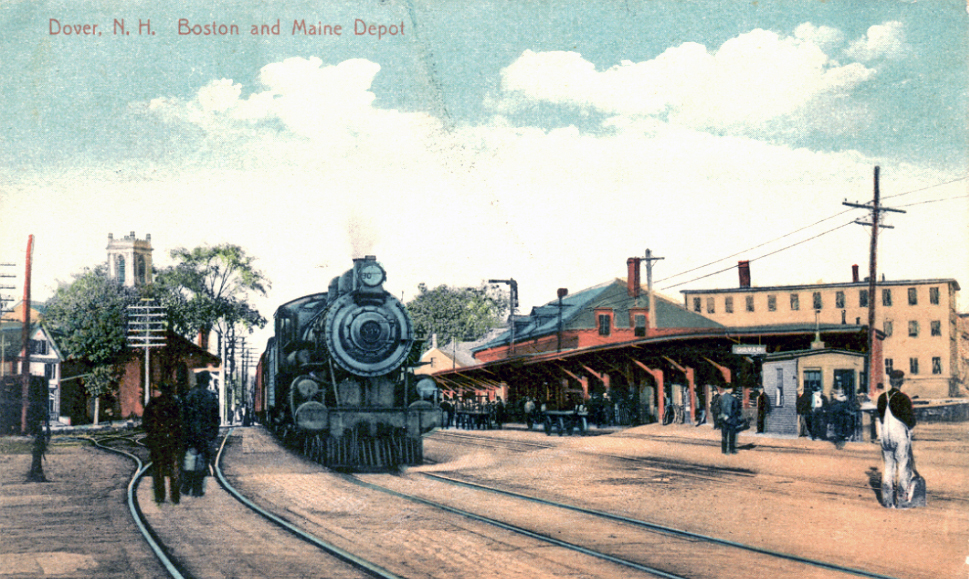
In April 1935, B&M's new streamlined "Flying Yankee" was brought into service in Dover. For twenty-two years, this train ran between Boston, Portland, and Bangor, carrying twice its normal capacity during the Second World Was. It was also used to take scenic excursions to the White Mountains and to White River Junction, Vermont. It served exclusively as a passenger train for almost three million miles, until it was replaced by the Budd diesel rail cars (known in Dover as Buddliners).
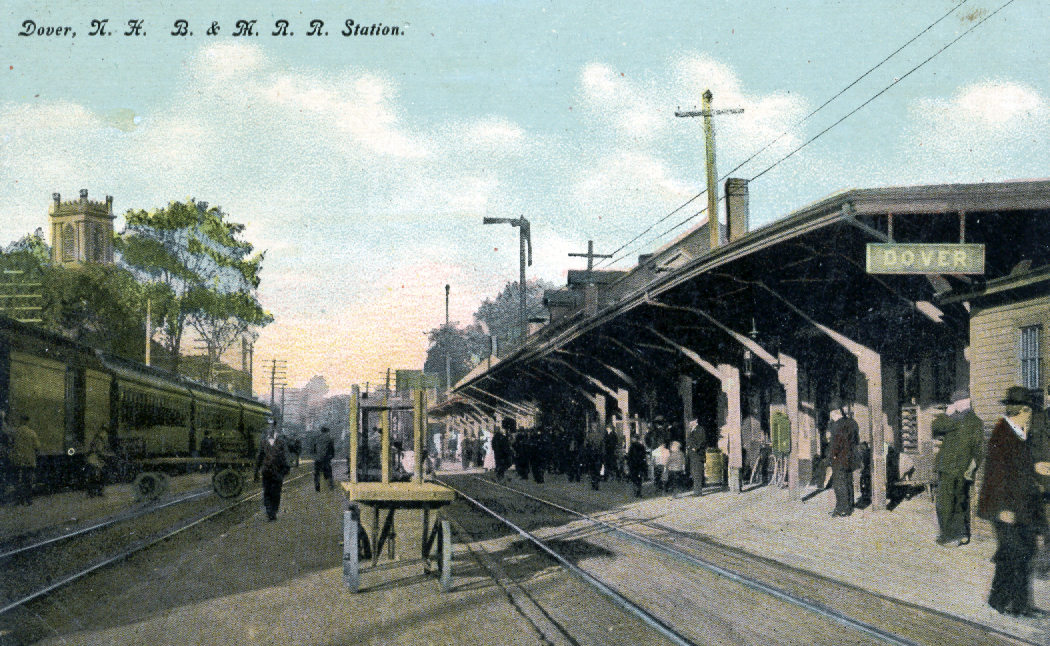
The steam train was permanently retired from Dover's tracks in 1952, replaced by diesels, and the Chestnut Street water tower has since been demolished. The last passenger train left the city on June 30, 1967.
from the 1995 Heritage Trolley Tour Booklet
December 14, 2001, passenger service from Portland to Boston, stopping in Dover, resumed with the arrival of Amtrak's Downeaster.
This historical essay is provided free to all readers as an educational service. It may not be reproduced on any website, list, bulletin board, or in print without the permission of the Dover Public Library. Links to the Dover Public Library homepage or a specific article's URL are permissible.
